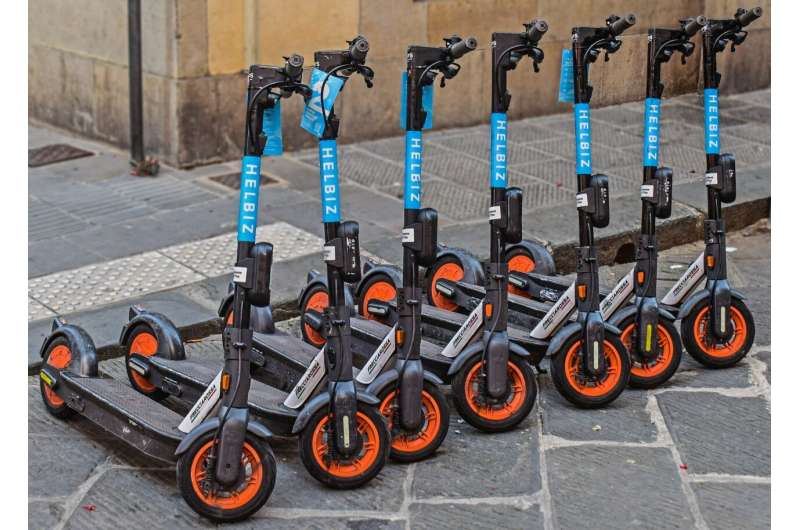This article has been reviewed according to Science X's editorial process and policies. Editors have highlighted the following attributes while ensuring the content's credibility:
fact-checked
reputable news agency
proofread
Why children should not ride e-scooters

Shared or personal use electric scooters (e-scooters) are common in cities and on college campuses across the United States. Much like bike shares, you can find them on the street, unlock them with a smartphone app and leave them at your destination. But there is a cost to convenience: e-scooter-related emergency room visits have spiked.
With the holiday gift-giving season upon us, it is important to be aware of dangers and regulations surrounding e-scooters and how to keep kids safe as riders or pedestrians.
If you fall off an e-scooter, which can travel up to 15 and 20 miles per hour, you are going to get hurt. Period.
The most common injuries are cuts, fractures and head injuries. Some of these injuries are severe. Many of these injuries are caused by incidents with motor vehicles or user-control issues of the e-scooter.
The American Academy of Pediatrics recommends that children under 16―who are too young to have a driver's license―should not operate or ride on motorized or e-scooters.
If e-scooters haven't reached your sidewalks yet, there are three types of scooters. Non-motorized human-powered scooters operate without a motor. The motorized scooter is a two-wheeled vehicle with a rechargeable battery. An e-scooter is a dockless two-wheeled vehicle s available for rent in various cities.
All scooters pose a similar―if not increased―risk of head injury compared with bikes. Helmets are the best way to prevent serious head injuries, but usage remains low.
E-scooter injuries in children are increasing, which is likely due to the rising popularity of e-scooter sharing apps. It is important that parents are aware of the dangers and regulations surrounding e-scooters.
Many cities set an age restriction for 16 years and up to operate e-scooters. Law enforcement can issue traffic violations to those who break those rules. A juvenile age 16 or over is treated as an adult for traffic offenses. For younger offenders, however, a court can require a parent or guardian to appear personally at court hearings and pay a fine.
If you live in a city with e-scooters for rent, make sure you understand how to operate an e-scooter safely before riding it. Riding an e-scooter is very different than riding a bike. They accelerate without you pedaling. They have a different center of balance that takes getting used to.
Understand that e-scooters are easily accessible to minors. For example, most cities do not have a way to verify a user's age, so children and teenagers are able to sign up on an app without parental consent. Make sure your children know the rules and your expectations. Check their phone if you have concerns.
Talk with your college-aged children about the dangers of operating e-scooters while texting, listening to music, or while under the influence of drugs or alcohol.
2023 Tribune Content Agency, LLC.





















